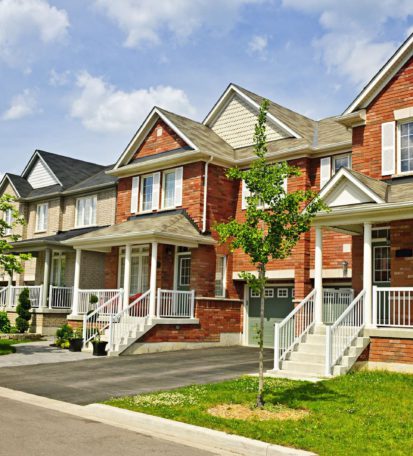Uncategorized
What Are the Smartest Ways to Finance a Custom Home Project?

If you’re dreaming of building your own slice of paradise Down Under, whether it’s a sleek modern pad in the suburbs or a cosy retreat in the countryside, financing a custom home project can be exciting but full of potential snags.
In this post, we’ll dive into the smartest strategies to finance your custom build, tailored for folks right here in Australia.
Investigating All Traditional Loan Options Wisely
For a custom house, construction loans are the first remedy because funds are released in stages as the build progresses-an advantage that can keep interest costs low because you can only pay interest on the withdrawn amounts. They differ from home loans in which borrowing is given in lump sum before the project starts. In Australia, the big banks will offer competitive rates, so it pays to shop around. Interest rates, fees, and features such as offset accounts that cut years off repayments should be compared.
Another smartest hack is to fix the rates on a mortgage loan during its building phase for some certainty during potentially fluctuating Reserve Bank decisions. For example, if prevailing interest rates have been around 6%, then fixing a portion of the loan would act as protection against any hikes.
Government Incentives and Grants
Australia offers quite attractive incentives that can of course make financing your new-build custom home much more attractive if you focus on sustainability or are a first-time homebuyer. While HomeBuilder has been withdrawn, you may like to check out state-specific programs like the Homebuyer Fund in Victoria, which offers shared equity schemes to lower the upfront costs of purchase. For energy-efficient construction, there are also rebates available through schemes such as Victorian Energy Upgrades for solar panels and insulation, which could save you thousands.
If a first-home buyer, the First Home Owner Grant will grant you up to $10,000 in most states, and combined with the stamp duty concessions, it can surely come in handy. More is offered in regional areas, such as Queensland’s regional home building boost. The trick is to get researching your eligibility early; most require that your build meets certain standards, such as under a price cap.
Leveraging Equity and Alternative Funding Sources
Equity in a current house? Using this as security for a line of credit, or possibly for a refinance, can be a dirtier way to clean funds for the custom job, rather than go for those prohibitively priced personal loans. Where rising property values are common phenomena in metropolises such as Melbourne, extraordinary funds could be released at lower rates. However, be cautious: putting in too many layers of credit can put your current assets in a very precarious position if something does happen and value cannot be realized.
People with superannuation may withdraw from voluntary contributions under the First Home Super Saver Scheme for a tax-free deposit, capped at $50,000 per person. It is an excellent long-term play if you have been contributing extra into super. Crowdfunding or P2P lending platforms are the new kids on the block, although much less used for homes; they’re better suited for unique eco-builds where you make pitches to investors with shared interests.
And if you’re in Melbourne, Melbourne financial advisors will be able to give you localised information on what equity release pathways fit the trends of Victorian properties.
Partnering with the Right Professionals
Building a custom home is never done alone. Surrounding yourselves with relevant experts eases a lot of the financing and execution process. Engage an architect or designer preconstruction to improve your plans to be “finance-friendly;” lenders like to see fully detailed cost plans. A quantity surveyor will give you realistic costs that work well for loan applications and budgeting.
Then comes the builder, an equally important person. Choose builders with a good reputation and fixed price contracts, so you never get any unpleasant surprises. In a busy area like Melbourne, custom builders in melbourne are known to liaise directly with lenders to gatekeep approval and perhaps even negotiate better terms on your behalf.
Avoiding Potential Pitfalls and Keeping Options Open
There’s always room when plans are laid out, and that is the one thing that a shrewd financier anticipates. Now, inflation in materials—whether timber or steel—has not been the easiest to handle post-COVID, so do build in at least 10-15% contingency. Delays from weather or approvals further hike interest costs on construction loans, so build in extra time.
Watch out for hidden fees: you could incur application costs, valuation fees, and legal charges. Set your mind straight on loan terms and conditions; there might be penalties for early repayments. Changes in the economic environment, an increase in interest rates for instance, require you to be flexible, perhaps even entering the initial phase smaller and ramping up later.
Check on your finance again during the build-up; if the prices begin to creep, it might even be a consideration to refinance mid-build. Keep up-to-date through organisations such as the Australian Securities and Investments Commission. Patience along with flexibility turns from setbacks into merely requiring a bump.
Wrapping It Up: Your Path to a Dream Home
There you have it, folks-the sharpest ways to finance your custom home project in Australia, from planning hard to smart incentives and professional partnerships. By assessing your financial position, looking into loans, tapping grants, equity, working with experts, and avoiding common pitfalls, you’ll be well on your way to getting yourself a perfect abode minus the stress. Remember, you’re building not a house but a future to fit into your Aussie lifestyle.




